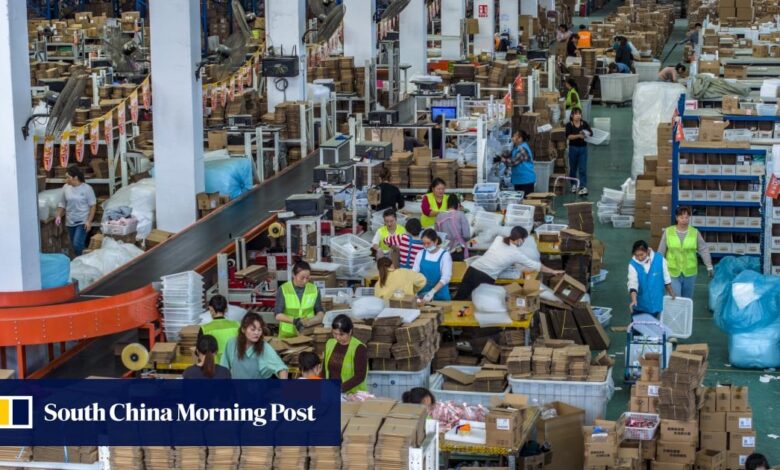China hits 100 billion deliveries as couriers grow part and parcel with e-commerce

This equates to an average of 71.43 packages per person, 5,144 packages delivered every second, or 440 million packages moving across China every day.
Per the same data, peak daily volume exceeded 580 million parcels, average monthly volume surpassed 13 billion parcels and average monthly revenue was over 100 billion yuan (US$14 billion) – all record highs.
China is the world’s largest e-commerce market – accounting for about half of global online sales – with companies like Alibaba, JD.com and PDD becoming household names in the sector. Alibaba is the owner of the South China Morning Post.
According to the Ministry of Commerce, China’s online retail sales reached 15.4 trillion yuan (US$2.1 trillion) in 2023, growing by 11 per cent and consolidating its global lead for the 11th consecutive year.
To capture market share, many couriers have cut prices to unsustainable levels, pushing some small and medium-sized firms to the brink of extinction and eroding profitability across the industry.
Last year, major Chinese courier companies STO Express, Yunda and YTO reported a decline in revenue per parcel.
The surge in parcel numbers is also driven by more product returns. Some sellers report return rates of around 60 per cent, with women’s clothing – a product category boasting some of the highest return rates – seeing percentages as high as 80 to 90 during peak periods, according to some media reports. This means that only one or two of every 10 purchases are actually completed.
Cherry Wang, a resident of the southwestern city of Chengdu, is one of many young women with no qualms about returning clothes. During China’s premier online shopping seasons, she returns up to 70 per cent of her purchases.
“I usually go all out during big sales, spending about 2,000 yuan and returning around 1,000 yuan’s worth,” she said. “Even when I’m not shopping much, my return rate is still around 50 per cent.”
Consequently, the volume of parcels collected and delivered in rural areas has increased more than tenfold over the past decade.
Building on China’s rural delivery systems, courier companies have increased their own investments in technological and logistical improvements. In the country’s less densely populated western regions, packages that once took a week to arrive can now be delivered in as little as two or three days.
Source link




